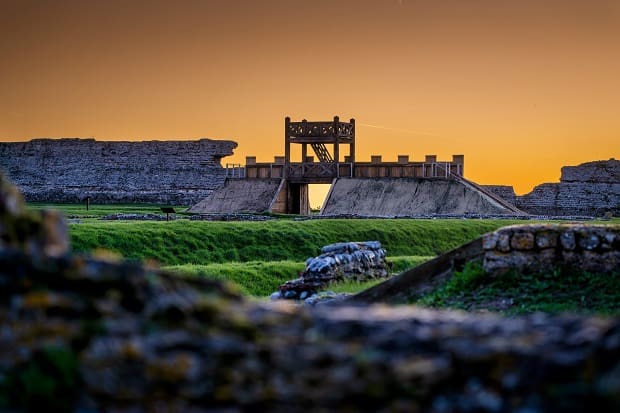
A reconstructed Roman gateway and rampart providing panoramic views across Richborough Roman Fort and Amphitheatre will open to the public tomorrow (19 April), English Heritage has announced.
Standing an impressive 8m high, the gateway has been built on the exact spot of an original fortification in AD 43, used to defend the place where the Roman invasion forces landed in Britain.
English Heritage has also curated a new museum display, with previously unseen objects from the collection found at Richborough, which explores the site’s history spanning both the beginning and the end of Roman rule.
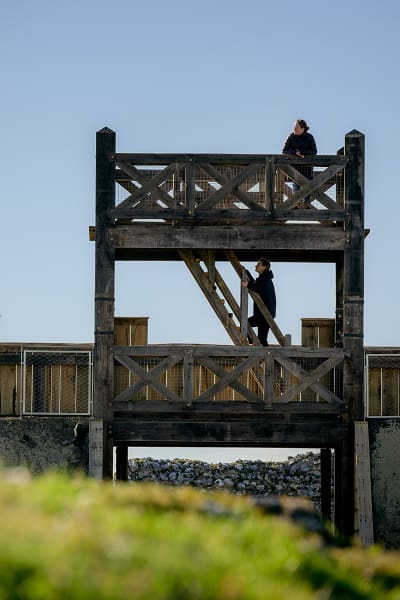
Exhibits range from a 2000-year-old glass cup made from blown glass in the Middle East to a trader’s weight in the shape of Harpocrates, the god of silence, which is the only one of its kind in Britain.
From a military base to a thriving port town and back again, Richborough is a hugely significant Roman site in Britain, often referred to as the ‘gateway to Britannia’. At the time of the invasion, Richborough was a small island which became the location of a large fortification, which was discovered by archaeologists in the 1920s.
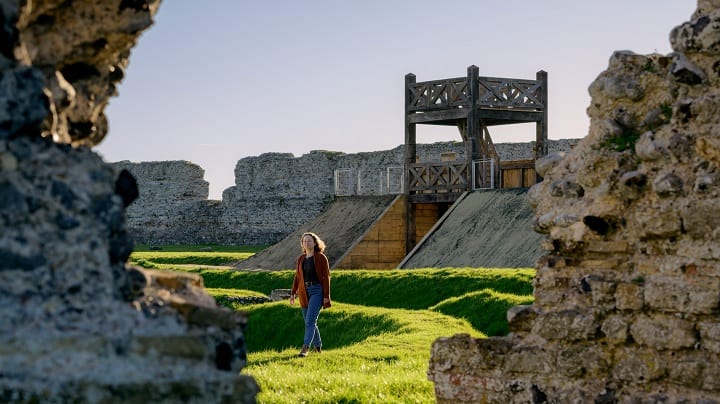
At the entrance to the defences, in 2021, a new generation of archaeologists exposed the holes in the Roman ground surface which had held the large timber posts that had supported a wooden gateway and tower. This tower guarded an entrance to the fortification, where soldiers and supplies would be assembled after disembarkation from a fleet of ships.
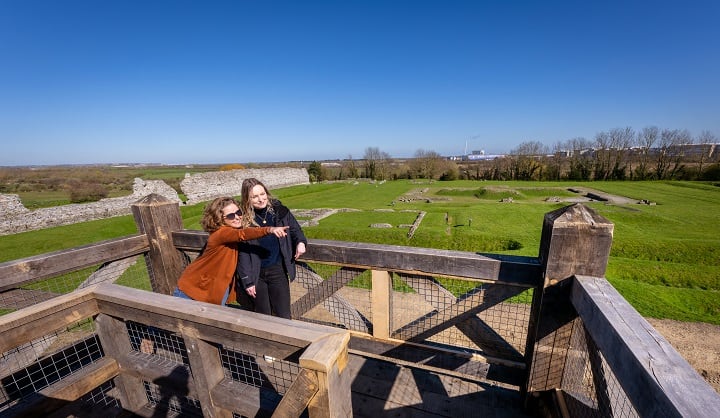
Now, centuries later, based on the archaeological evidence and Roman sculptural sources, English Heritage has intricately reconstructed the ancient Roman defence exactly above the site of the original.
Paul Pattison, English Heritage’s Senior Properties Historian, said: “This is an historic moment. To be able to rebuild a structure as accurately as possible, and one that stands on the exact spot of the original at Richborough almost 2000 years ago, is remarkable.
“The Roman invasion was a major milestone in our history. We know that Richborough witnessed over 360 years of Roman rule – from the very beginning to the bitter end – but standing atop this 8m-high gateway, looking out and imagining what the first Romans might have seen, is quite an experience.”
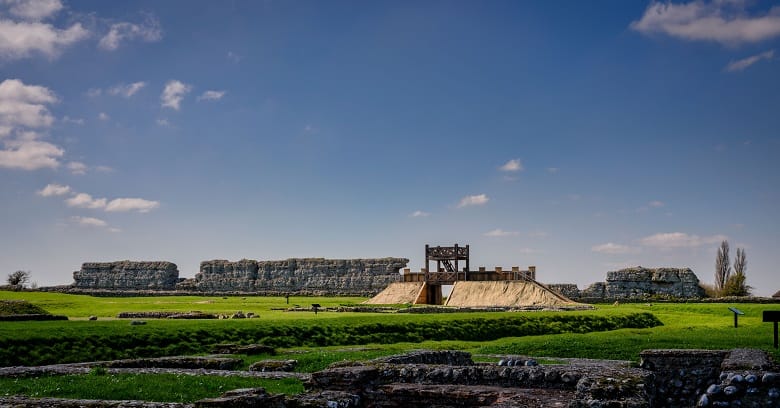
The new gateway has been constructed in oak, using Roman-style dovetail, lap and scarf joints. The tower takes inspiration from depictions of Roman fortifications on Trajan’s Column in Rome, including the crenelated parapet with its frame of timber uprights connected to rails, to which vertical boards are nailed, using hand-made iron nails similar to Roman types.
As the main entry point to Britain from mainland Europe, Richborough transitioned from a military base to a thriving port town and back to a military base again over the course of its 360 years of history.
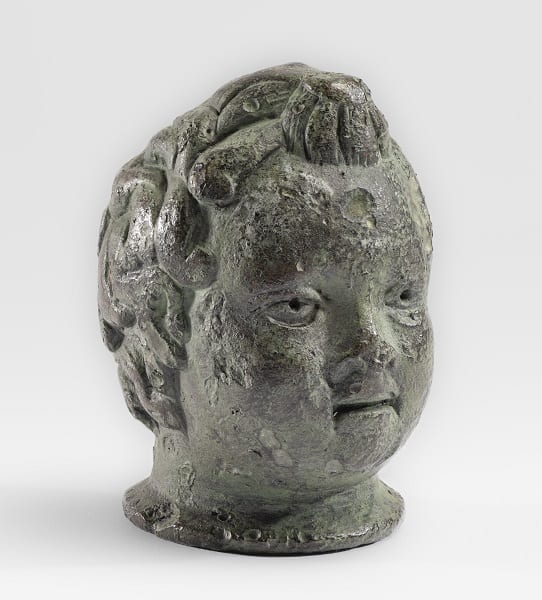
The collection of objects found at Richborough is one of the largest for any Roman site in the country, including an extraordinary 450 brooches, over 1,000 hairpins, and 56,000 coins. Alongside the surviving ruins of the later Roman fort, these objects add an invaluable insight into the people of Richborough.
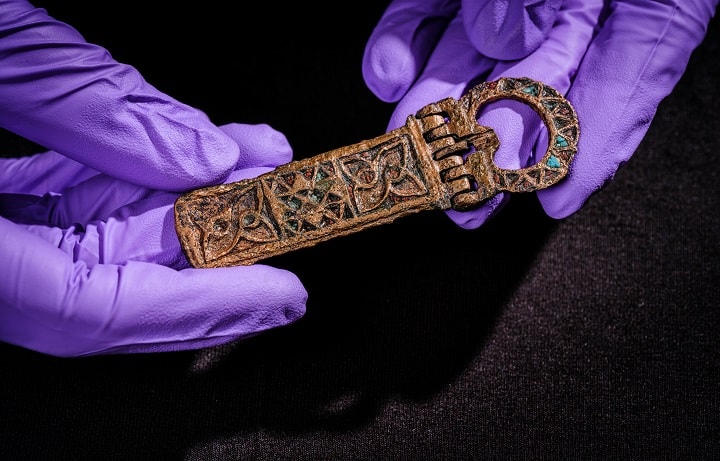
Individual items can be identified as belonging specifically to soldiers, farmers, officials, craftsmen, pagans, Christians, and women and men of all social classes, and there are even hints at individuals who travelled from other parts of the Empire, many from the areas of northern and eastern Europe as well as some from as far away as Byzantium in modern Turkey.
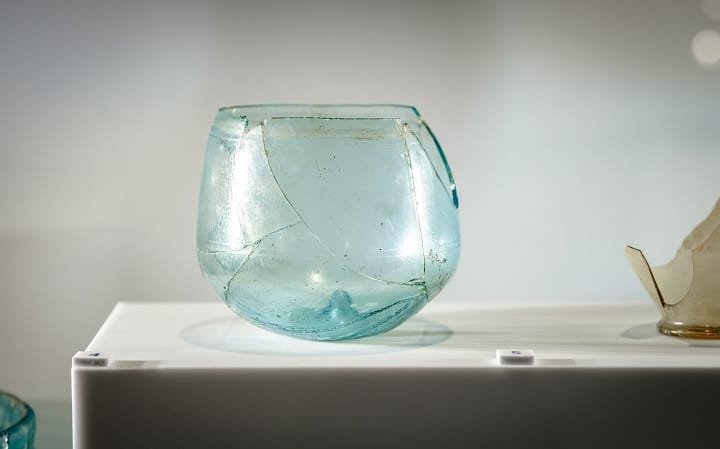
A few of the rare treasures on display for the first time at the museum in Richborough are the 2000-year-old glass cup made from blown glass from the Middle East, the trader’s weight, women’s hairpins, introduced by Romans as new fashions, including one design depicting a female head which appears at Richborough in three forms: a delicate gold example; a finely crafted version in bone imported from the Continent; and a simple local copy – suggesting the differences in wealth at the site, and finally statuettes of Roman gods which would have been present in shrines where worshippers presented offerings as gifts.
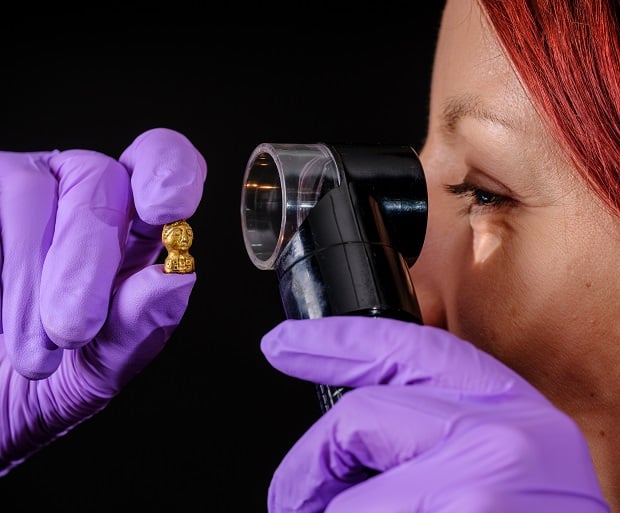
Visitors to Richborough will also be able to enjoy new audio guides, led by historian and broadcaster Tessa Dunlop, to accompany their walk around the site. Drawing parallels between Richborough’s Roman inhabitants and modern occupations, the guide includes interviews with local miners, oyster sellers, stonemasons, a special-forces solider, a former harbourmaster and an Olympic boxer, who bring a contemporary take to life in Roman Richborough.
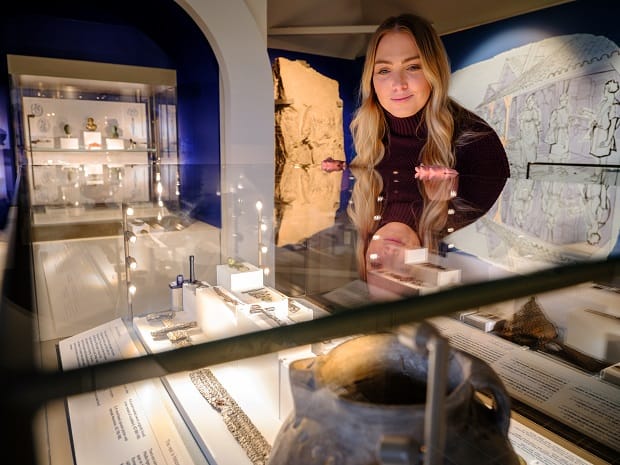
Richborough Roman Fort and Amphitheatre and the newly constructed gateway will open to the public on Wednesday 19 April.
For more information about Richborough and to purchase tickets, visit: https://www.english-heritage.org.uk/visit/places/richborough-roman-fort-and-amphitheatre/

